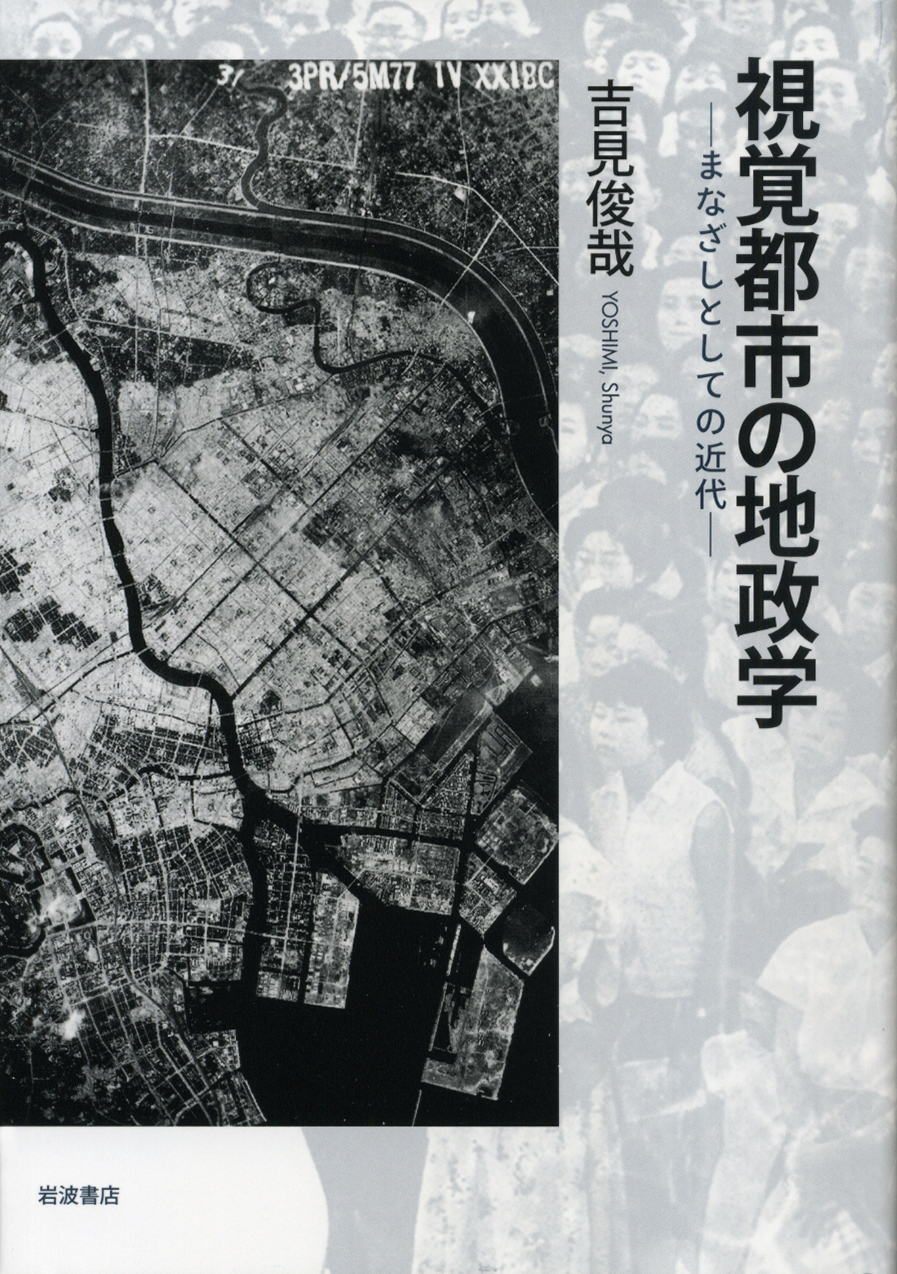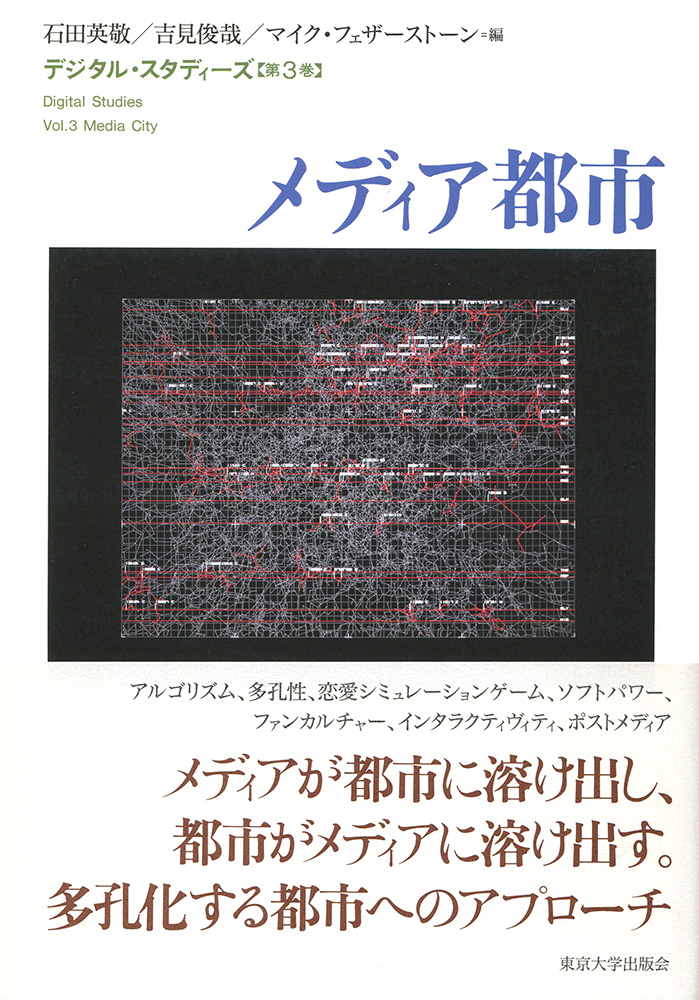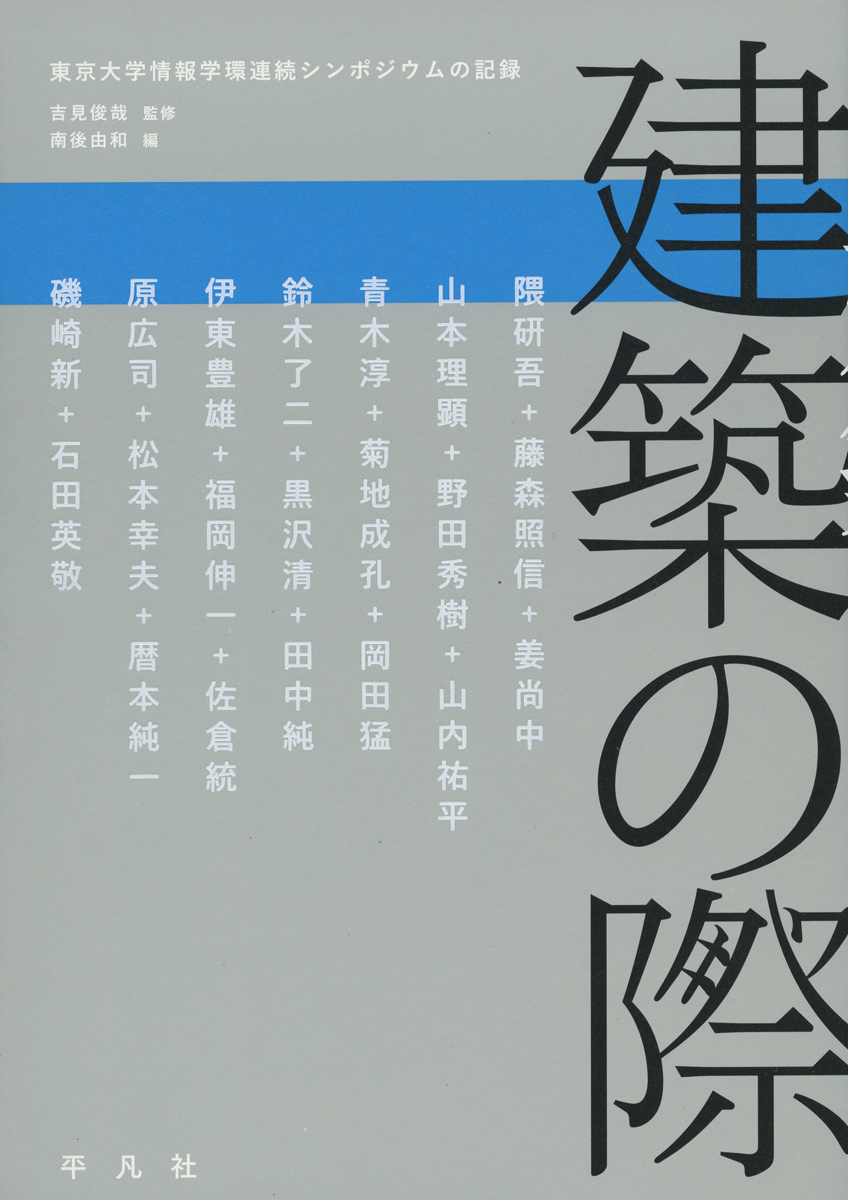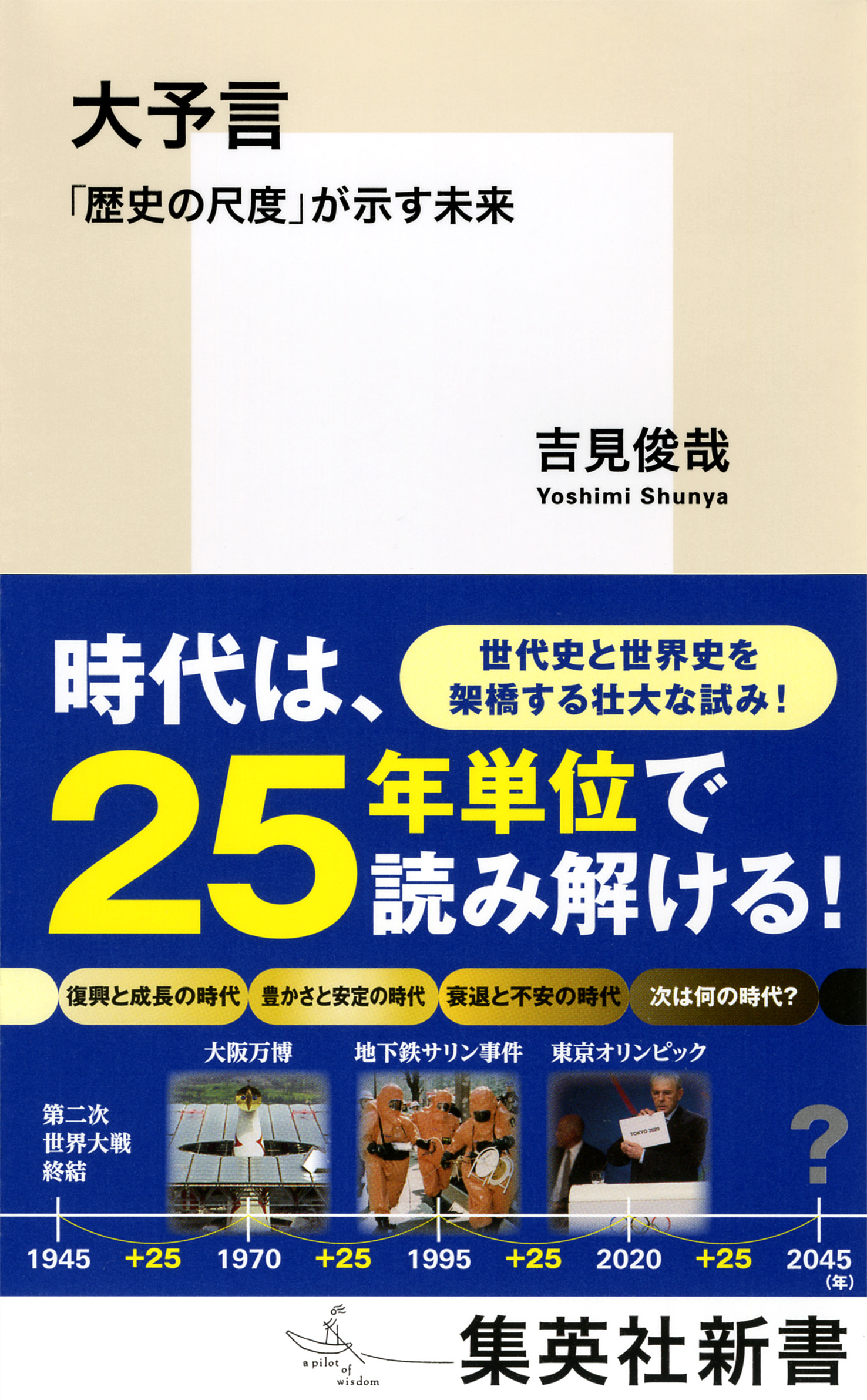
Title
Shikaku-Toshi no Chiseigaku (Cultural Geopolitics of Visual City)
Size
472 pages, A5 format, hardcover
Language
Japanese
Released
March 25, 2016
ISBN
978-4-00-061086-5
Published by
Iwanami Shoten
Book Info
See Book Availability at Library
Japanese Page
This book is a collection of major articles on the history of Tokyo written by the author since publishing Toshi no Dramaturgy (Dramaturgy of the City) in 1987. The first article analyzing Tokyo Disneyland included in this book was written in 1992. Although the author has published many books on other topics since the 1990s, this work returns to a theme originally considered about 30 years ago, namely the transformation of urban visuality in Tokyo.
In Dramaturgy of the City in 1987, the author focused on two facets of the modern city as a place of gathering and as a place of gazing. He shows how the process of meaning production in the city was transformed through the two moments of “population influx from the countryside to the city” and “construction of a modern urban gaze”. This approach is continued in the present work by considering various strategies whereby the city organized people’s gaze. To develop a deeper understanding of the relation between people’s gaze and the city, this book focuses on a number of specific spaces - the department store, the movie theatre, the theme park, the house equipped with electrical appliances, and the living room with television - bringing to light the historical transformation of each one through an examination of the social bodies gathered in them. In this way, a deeper analysis of the relation between each of these cultural devices and the people who gaze at them is attempted.
Throughout the book the author emphasizes the proliferation of screen-like spaces in modern metropolises like Tokyo. As visual media, including photographs, film, television and the Internet increasingly penetrate the city, urban space becomes more and more virtual. In order understand this process more fully, one needs to analyze specific places where the urban gaze has been focused.
For instance, up until the 1950s, this gaze was focused mainly on national expositions and movie theatres. The book shows how both of these emerged and expanded in relation to the divisions of class and gender. It also discusses how the growth of Tokyo as an imperial capital in the 1910s and 20s (despite the interruption of the Great Kanto Earthquake) both influenced and was impacted by these divisions. Later, in the 1960s, the urban gaze was further transformed with the rapid penetration of television into the household. In becoming an integral part of the household space, television became a radically different medium from what it had been when it was viewed in the public space of the streets. From the period of rapid economic growth onwards, advertising became the driving force of urban reality. The resulting process of virtualization is traced in the book from its earlier manifestations in the National Exposition to its fuller expression in theme parks like Tokyo Disneyland.
(Written by Shunya Yoshimi, Professor, Interfaculty Initiative in Information Studies / 2018)



 Find a book
Find a book





